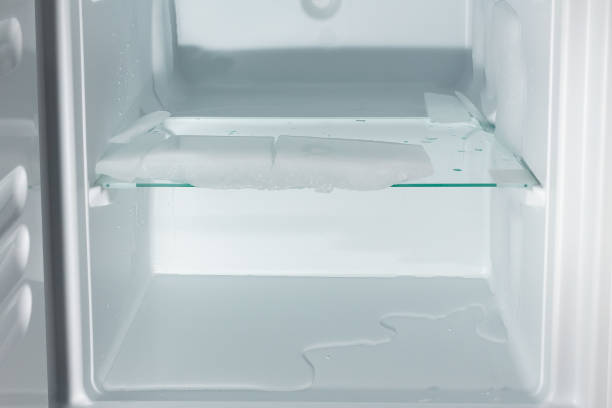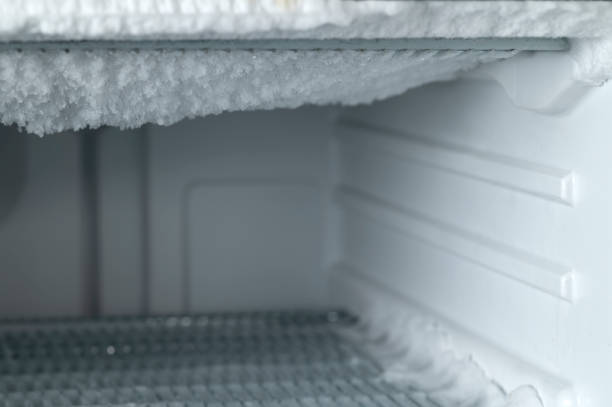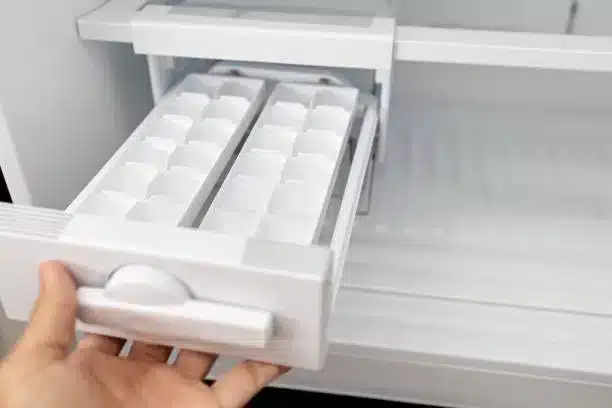Why does condensation happen in your freezer and how can you prevent and stop it? In this post, we will explain some of the common causes of freezer condensation and share some tips and tricks on how to deal with it effectively.
The most common causes of freezer condensation are: broken seal, hot leftovers, drainage issues, energy-saving features, worn gasket, humidity, and improper clearance.
How to Prevent Freezer Condensation
The best way to deal with freezer condensation is to prevent it from happening in the first place. Here are some tips on how to prevent freezer condensation:
- Check and replace your seal. The seal or gasket is the rubber strip that surrounds the door of your freezer and creates an airtight seal when closed. If the seal is broken, loose, or damaged, it will allow warm air to enter your freezer and cold air to escape, creating condensation. Check your seal regularly for any cracks, tears, or leaks, and replace it if needed.
- Avoid putting hot food in the freezer. Putting hot food in the freezer will create a lot of steam and moisture, which will condense on the walls and door of your freezer. This will also make your freezer work harder to cool down the food and use more energy. To avoid this, let your food cool down completely before putting it in the freezer, or refrigerate it first until it reaches room temperature.
- Unclog the drainage hole. Your freezer has a small drainage hole at the back or bottom of the unit that allows excess water to drain out into a pan near the compressor. The water then evaporates when it meets the heat from the compressor. However, if the drainage hole is clogged with food debris or ice, it will prevent the water from draining properly and cause it to accumulate inside or outside your freezer. To unclog the drainage hole, use a pipe cleaner or a thin wire to poke through it and remove any blockage.
- Turn off the energy-saving feature. Some freezers have an energy-saving feature that turns off the anti-sweat heaters that prevent moisture from forming on the exterior of your freezer. This can save you some money on your electric bill, but it can also cause condensation on your freezer’s exterior walls. If you notice this happening, you might want to turn off this feature and see if it makes a difference.
- Keep your freezer away from heat sources and direct sunlight. Your freezer should be placed in a cool and shaded area away from any heat sources such as ovens, stoves, dishwashers, radiators, or windows. Heat sources can raise the temperature of your freezer and make it work harder to keep it cold, which can lead to condensation. Direct sunlight can also heat up your freezer and cause condensation on its exterior.

How to Stop Freezer Condensation
If you already have condensation in your freezer, here are some tips on how to stop it and get rid of it:
- Wipe off any water droplets or frost. Use a soft cloth or paper towel to wipe off any water droplets or frost that have formed on the outside or inside of your freezer. This will prevent them from dripping or melting and causing water damage or rust.
- De-ice your freezer. If you have a lot of frost or ice buildup in your freezer, you may need to de-ice it manually or use the defrost function if your freezer has one. To de-ice your freezer manually, turn off the power and unplug your freezer, then remove all the food items and store them in a cooler with ice packs. Use a plastic scraper or spatula to gently scrape off any ice or frost from the walls and floor of your freezer. Do not use any sharp tools or metal objects that can damage your freezer. You can also use a hairdryer on low setting to melt any stubborn ice or frost, but be careful not to get any water on the electrical parts. Use a towel or sponge to soak up any melted water and dry off your freezer thoroughly before plugging it back in and restocking it with food.
- Check and adjust your thermostat. Your freezer’s thermostat controls the temperature of your freezer and how often it cycles on and off. If your thermostat is set too high or too low, it can cause your freezer to run too frequently or not frequently enough, which can lead to condensation. Check your thermostat and make sure it is set at the optimal temperature, which is usually 0°F or below. You can use an appliance thermometer to check the actual temperature of your freezer and adjust it accordingly.
- Avoid opening and closing your freezer door too often or for too long. Every time you open and close your freezer door, you let out some cold air and let in some warm air, which can create condensation. To minimize this effect, try to open and close your freezer door as quickly and as infrequently as possible, and avoid leaving it open while you search for something. Plan ahead what you need to take out or put in, and keep your freezer well-organized and clutter-free.
- Make sure your freezer is level. Your freezer should be level on the floor and have a slight tilt towards the back. This will ensure proper drainage of water and prevent it from pooling inside or outside your freezer. You can use a level tool to check if your freezer is level and adjust the feet or legs of your freezer if needed.

Conclusion
Freezer condensation can be a hassle and a hazard for your freezer and your food. It can make your freezer wet and slippery, cause rust and corrosion, increase your energy consumption, and affect the quality and safety of your food. However, you can prevent and stop freezer condensation by following some simple tips and tricks, such as checking and replacing your seal, avoiding putting hot food in the freezer, unclogging the drainage hole, turning off the energy-saving feature, keeping your freezer away from heat sources and direct sunlight, wiping off any water droplets or frost, de-icing your freezer, checking and adjusting your thermostat, avoiding opening and closing your freezer door too often or for too long, and making sure your freezer is level.



